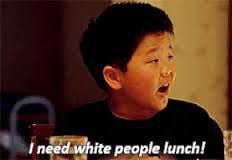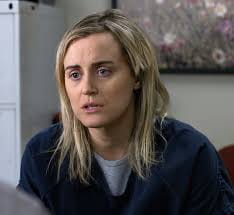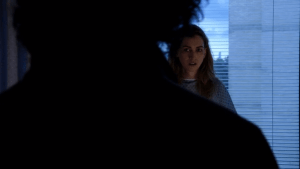After watching the first season of Fresh off the Boat, there were many interesting episodes that touched on a variety of topics, this blog post will be written about episode thirteen: So Chineez. Episode thirteen was written by Nahnatchka Khan and directed by Chris Koch. Director Chris Koch is also known for being the director for shows such as Modern Family, Scrubs, The Neighbors , etc. and Nahnatchka Khan is known for writing and producing episodes for shows such as American Dad!, Don’t Trust the B—- in Apartment 23, Always Be My Maybe.
The episode begins with different scenes of the family members in their habitual settings, voiced over by Eddie Huang. Eddie describes: “I became my school’s first black president, dad put the restaurant on the map, my brothers were still nerds, grandma was busy doing her thing, but no one was fitting in better than mom, she was down with “Melrose Place,” Hip-hop music is played in the back, similar to the beginnings of other episodes. It is arguable how Eddie’s voice over helps the show, but it shows that it is from Eddie (one of the main characters)’s perspective. The narration isn’t necessarily consistent; however, most episodes begin and ends with Eddie’s narration and hip-hop music.
In the episode, the dialogues mainly focused on the Huang family, Eddie and his friends at school, and Louis with his new country-club friends. One major use of silence was when Louis called his newly-found business partner Ted an “Ass wipe.” The club members’ smiles disappeared as Louis realized that his joke was “too far.” Louis then apologizes and says he is still learning as the other club members laugh it off and continue to play tennis. This scene shows how Louis is fitting in at the club and learning the “traditions,” similar to how his family is fitting into the new Orlando culture. Even though there was an awkward silence, the club members simply laughed it off when Louis apologized to Ted.
The conversation between Eddie and Trent at the cross-cultural fair showed Jessica that Eddie is proud of his heritage and remembers what she has taught him about Chinese traditions and culture. As Eddie proudly told Trent of his heritage, there was the external reference to The Four Great Inventions, The Great Wall of China, and the 5000 years of Chinese history.

Huang family’s new license plate at the end of season 1
I think this episode was a good way to end the season as it continues to explore racial/cultural identity in a comedic manner. The show began with the Huang family struggling to fit in, and through season one they were able to each find their own place in the community. It ends positively and leaves the audience to wonder what will happen in the next season. It is clear that each character still has a lot of room for development as Louis is looking to open another branch for his restaurant, Jessica is reflecting on “who she is,” and the kids are slowly growing up.

























